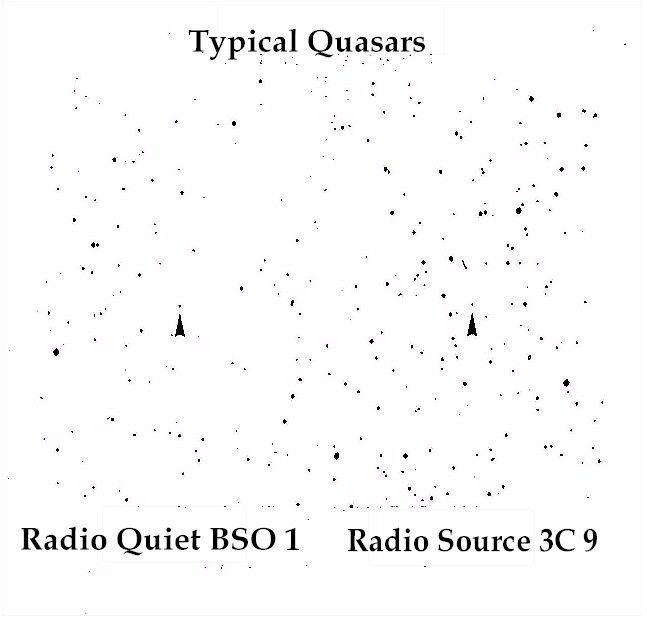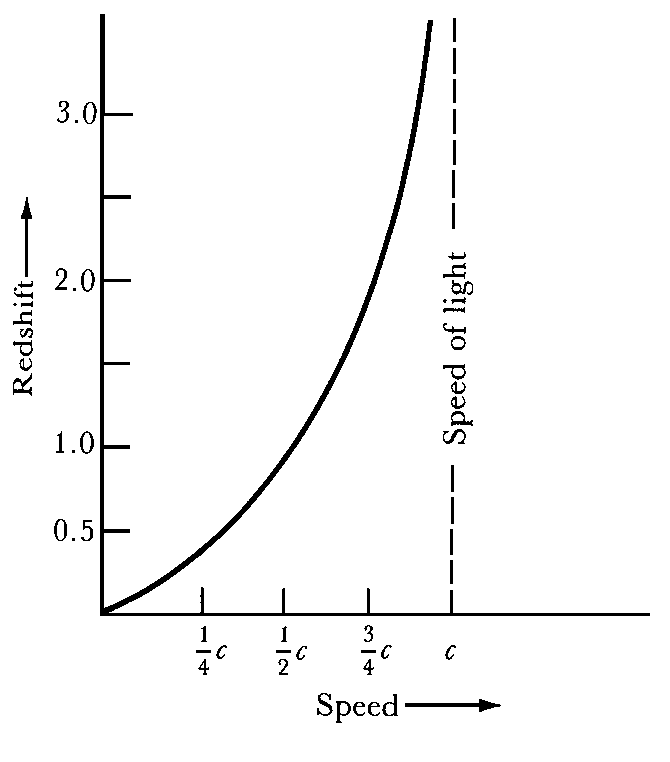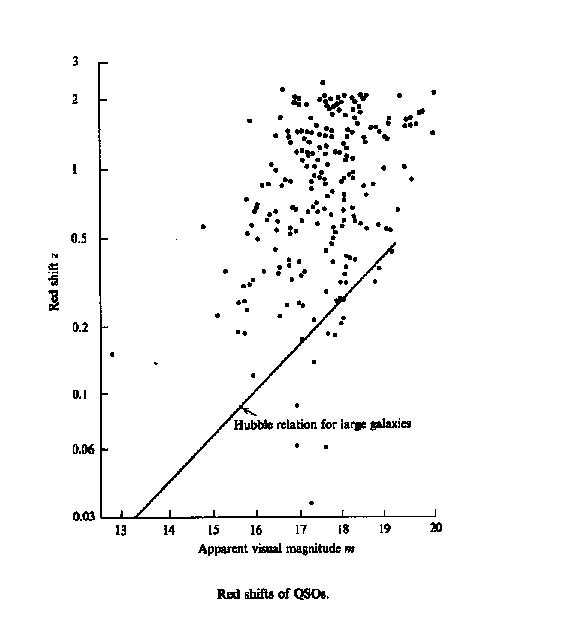
Quasars were first discovered over 30 years ago. Even after all this time, they remain one of the greatest mysteries in the universe. In astronomical photographs of the heavens they appear to be ordinary stars. Yet their spectra are greatly different from normal stars. They have been found to have very large redshifts -- far larger than that found for galaxies. But this large redshift creates big problems.

The only cause of such a redshift accepted by the astronomical community is the Doppler effect due to recessional velocity, which in turn was caused by the assumed expansion of the universe (the Big Bang). When the distance to these objects is estimated using the ‘Hubble Law’, they appear to be as much as 15 billion light years away. For them to be visible from such a distance they must generate energy many millions of times greater than anything known, and yet because many are variable over a period of just months, they must be quite small. The source of this extreme energy is a complete mystery.
There are several other problems with quasars. For one thing, if their redshift is due to the Doppler effect and velocity of recession, many appear to be moving away from us at speeds very near the speed of light! In fact, a redshift greater than z = 1 implies a velocity greater than the speed of light, and only by applying corrections from Einstein’s General Theory of Relativity can a velocity less than the speed of light be deduced.


There are hundreds of known quasars with redshifts greater than z = 3, presumably moving away from us at over 90% of the speed of light. The energy needed to accelerate such objects to nearly light such speeds staggers the imagination. After 30 years of study, quasars are still as much a mystery as when they were first discovered.
Even more telling is that a number of quasars have been found with proper motion. That is, they are seen to move slowly across the sky over the span of a few years. If they were truly at the distances computed from Hubble’s Law, they could not possibly be seen to move in our lifetime! And yet numerous studies by highly respected astronomers have confirmed proper motion in quasars. Cosmological distances and proper motion are totally incompatible. The validity of using the Hubble Law to determine the distance, and therefore the energy, of quasars is very much suspect.
A few astronomers have argued that quasars are not really that far away, and that the Hubble Law does not apply to them. Astronomer Halton Arp, for example, has spent much of his long and successful career providing evidence of associations between quasars and galaxies, suggesting that they may be at similar distances. He has also amassed a large number of photographs of galaxies with widely different redshifts which appear to be interacting, as if they were near each other. His discoveries, which have taken him out of mainstream astronomy, raise serious questions about the redshifts of galaxies being caused by recessional velocity.
Another persistent voice against cosmological distances for quasars is astronomer Tom Van Flandern , formerly of the U.S. Naval Observatory.
The problem with quasars is that using the Hubble Law to compute their distance leads to extreme distance estimates -- to the edge of the universe, in fact. If quasars were not at the distances currently ascribed to them there would be no need to for them to have extraordinary energy. Non-cosmological distances would also be consistent with the observed proper motion of many quasars.
The following chart illustrates the relationship between the Hubble Law and some quasars. It is apparent that Hubble's Law does not apply to quasars, and therefore they are probably much nearer than present estimates!

Even though it does not seem to make sense, astronomers still use the Hubble Law to estimate distances for quasars because the Doppler effect is the only accepted explanation they have for the high redshifts.
JThacker@msn.com Return to Main Page